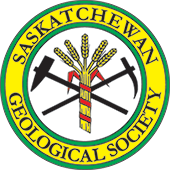Please RSVP to Jason Cosford at cosford@jdmollard.com or Monica Cliveti at monica.cliveti@uregina.ca before 5:00 pm, Monday, November 16, if you are going to have lunch.
The advantages of wide-spectrum geochemical sampling of groundwater: 101 uses beyond ‘water quality data’
Groundwater geochemical data are often collected and treated as ‘water quality data’ and compared against the benchmark of regulatory standards. This is not unreasonable since regional groundwater sampling programs are usually justified on a public health basis. However, this approach ignores the predictive value of appropriately collected aqueous geochemical data. Dissolved constituents never exist in isolation of each other, or of the host formation, and characterizing the aqueous geochemical matrix can reveal important groundwater processes, including those that affect public health. A minimum suite of parameters including the 7 major ions, pH, redox and certain dissolved gases, in addition to any health-related parameters of interest, provides much more information than the sum of their individual contributions.
A wide-spectrum groundwater geochemical sampling program has been completed in southern Ontario at an unmatched scale, density and degree of analytical completeness. 107 Sample attributes and 27 station attributes were characterized for 2300 samples collected at 1850 stations at a uniform sample density across a 96,000 km2 area. This allows the mapping of groundwater geochemical regimes in most of southern Ontario for the first time. Dozens of phenomena and processes have been identified at all scales, many of which were previously unknown. A few examples include: (1) wide regions of biogenic shale gas, (2) a 1400 km2 breathing well zone expelling hypoxic gases, (3) stagnant flow zones hosting Pleistocene waters, (4) provincial-scale patterns in the distribution of tritium in groundwater, (5) regions where iodine in potable water exceeds seawater by many times, (6) decadal-scale trends in aquifer recovery and depletion, (7) the replacement of ancient water in aquifers with modern water due to pumping, (8) provincial-scale regions of natural fluoride hazard (9) areas of systemic bacterial occurrence in aquifers, and (10) widespread, discreet zones of karstic groundwater flow. Most of these discoveries could not have been anticipated when the program began 8 years ago, which demonstrates the efficacy of primary data collection and geological mapping in the support of groundwater studies.
Dr. Stewart Hamilton - Ph.D., P.Geo. Ontario Geological Survey; Provincial and Territorial Geologists Medalist

